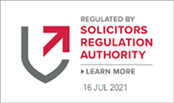
The Sentencing Council has launched a consultation on new guidelines for sentencing offenders for using a trademark without the owner’s consent. The new guideline will apply to both individuals and organisations in England and Wales.
The new guideline will replace the current guideline published in 2008, which is used in magistrates’ courts and applies to individuals only. The Council is seeking views on the draft guidelines from judges, magistrates and others with an interest in this area.
The unauthorised use of a trademark offence can include possessing or selling counterfeit goods, or counterfeiting or possessing the means of counterfeiting goods, with a view to making a gain or causing a loss.
How many people might this affect?
Over the last 10 years, there has been a steady decline in the number of people sentenced for these offences, from a high of a little over 800 each year, to as few as 350. That number does appear to be on the rise again, with over 400 offenders dealt with in the last year.
In 2008, 13 organisations were sentenced, all in magistrates’ courts. By comparison, in 2018, 32 organisations were sentenced for unauthorised use of a trademark, 25 per cent of which were sentenced in the Crown Court.
What is a typical sentence?
In 2018 the most frequently used sentence outcome for individuals was a community sentence, comprising 44 per cent of adult offenders sentenced. A further 33 per cent of offenders received a fine, 11 per cent received a suspended sentence, 5 per cent were sentenced to immediate custody and 3 per cent were given a discharge.
The remaining 3 per cent of offenders were otherwise dealt with. The proportion of offenders receiving immediate custody has decreased substantially, from 27 per cent of outcomes in 2008.
The statutory maximum sentence for the offence of unauthorised use of a trademark for an individual is ten years’ custody, although in 2018 no sentences exceeded 36 months. In 2018 the average custodial sentence length (ACSL) was ten months. The highest ACSL over the past decade was in 2017, with an average of one year.
After a community sentence, the second most common sentencing outcome in 2018 for individuals was a fine. For individuals sentenced in 2018, the average (mean) fine value was £286 and fine values ranged between £60 and £1,125. Of the adult offenders sentenced in 2018, 99 per cent were given a fine of £1,000 or less.
What impact will this proposed guideline have?
Overall, it is expected that the draft guidelines for individuals and organisations will encourage consistency of approach to sentencing and will not change average sentencing severity for most cases. However, there may be some increases in custodial sentence lengths for individuals sentenced for the most serious types of cases. For organisations, there cannot be any impact on prison or probation resources because organisations cannot receive custodial or community sentences, but there may be some increases in fine levels. However, Step 5 of the guideline asks sentencers to ‘step back’ and to consider the overall impact of all financial penalties. They may then adjust the sentence to account for this, and therefore reduce the fine level. Fines may therefore not increase considerably, if at all.
The hidden penalty
In many cases, it is not the substantive sentence that can be of most concern. Prosecutors will always consider making an application for confiscation (‘proceeds of crime’), and this can often be for a substantial sum. If you are being investigated or prosecuted for a trademarks offence, you must contact us as soon as possible.
[Image credit: “Police Seize Counterfeit Watches” by fairfaxcounty is licensed under CC BY-ND 2.0]
Contact Broadbents Solicitors
Here at Broadbents Solicitors, we cover various fields of law, ensuring that you have access to expert legal advice. You can call our dedicated team today: Alfreton 01773 832 511, Derby 01332 369 090, Heanor 01773 769 891, or Sutton-in-Ashfield 01623 441 123. Alternatively, you can head over to our online contact form and we’ll be in touch.






